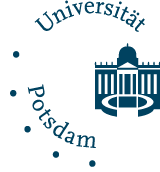28
Range of Probabilities
In Part 2 of questionnaires E, G, and GE1, respondents indicated the range of probabilities they associated with six of the uncertainty expressions from Part 1. ANOVA results to test for differences ın mean probability ranges are FepOHCd in Table 6. Of 329 respondents to questionnaires E, G, and GEI1, 21 were eliminated from this analysis either because they did not respond to this part of the questionnaire(n=7), they had one or more negative ranges(n=3), or they provided logically inconsistent responses(n=11). Inconsistency was defined as the lower range value for“not probable/nicht wahrscheinlich” being greater than the upper range value for “probable/wahrscheinlich.”
[Insert Table 6 here]
For the most part, probability ranges assigned to the various uncertainty expressions did not differ across the three respondent groups(CPA, WP/English, and WP/German). Significant differences ın mean probability range exist only for“virtually certain/so gut wie sicher” and “probable/wahrscheinlich.”
Bonferroni post-hoc comparison tests show that there is a significant difference ın probability ranges assigned by the WP/English and WP/German groups on“virtually certain/so gut wie sicher”(translation effect). There is also a significant difference between the CPA and WP/English groups on“probable”(culture effect). But there is no overall effect for either expression pair. In other words, although there is a broader range of probability associated with “virtually certain” by the WPs than by the CPAs, there is no difference in the probability range associated with“virtually certain” by the CPAs and“so gut wie sicher” by the WPs. Similarly,
there is no significant difference in the range of probability associated with“probable” by CPAs
